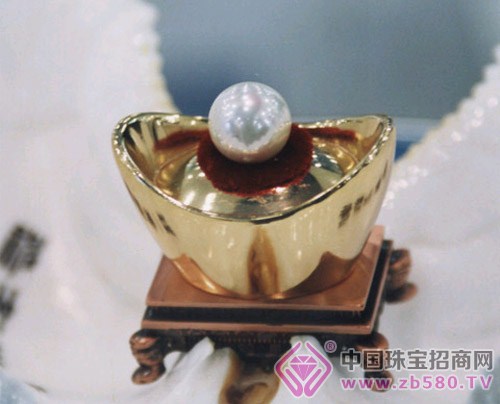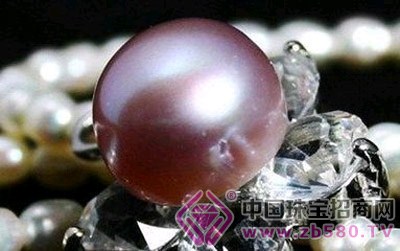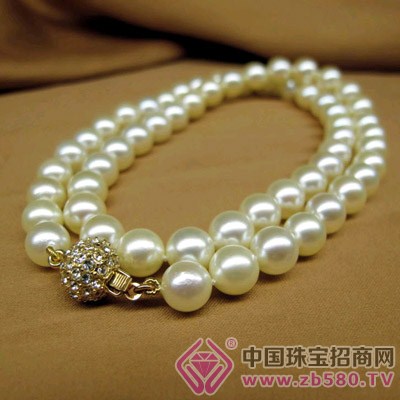Hepu mining pearls have a long history. Since ancient times, Hepu Pearl has been the famous pearl of China, and there are more than ten ancient pearl pools. According to the "Han Han Meng Taste Biography", Hepu Pearl Industry began in the Zhou Dynasty. As early as the Han Dynasty, Hepu Mining Pearl Industry was quite prosperous. The Hepu Port (namely the dry port) of the Han Dynasty is one of the important ports for China's foreign trade. At that time, Hepu was not only an important source of pearls, but also a distribution center for pearls. Silk and Hepu pearls and porcelain from southern China are exported to Southeast Asian countries. The sea provides a natural and good environment for the growth of Nanzhu. However, there have been several major ups and downs in the past. Zhou Dynasty and Warring States Since the Zhou Dynasty in the Eastern Zhou Dynasty, some people have collected pearls in Hepu. Although the historical records are unknown, this is the record of someone who was in Hepu earlier. In the Warring States Period, Hepu began to produce and process pearls, and used pearls as accessories and medicines, and exchanged pearls as commodities and exchanged food with merchants. Qin Chao In the Qin Dynasty, Hepu's pearl mining industry has been quite prosperous. "Yiqin opened up in Baiyue, and the scorpion smashed the pearl of the South China Sea." In the Qin Shihuang era, Hepu Pearl was used as a tribute, and the Pearl official stationed in Hepu forced the coastal pearl people to go to the sea to collect pearls. The bureaucrats at all levels took the opportunity to exploit and make Hepu The natural resources of the pearl have been greatly damaged. Western Han Dynasty In the first year of the Western Han Dynasty (the first 110 years), Emperor Wu of the Han Dynasty set up Zhuya County in Hainan Island. In the 19th year of Jianwu, it was set up in Zhuya County and belonged to Hepu. When the Western Han Dynasty Hancheng Emperor (the first 32 years - the first 7 years), Wang Zhang, who was crying with his wife at midnight in the poor, later made Jingzhao Yin, because of his daring words, Wang Feng, who was in power, was king. Feng Yu was imprisoned with a big crime, and his wife was seated. Soon, Wang Zhang was dead in prison, his wife’s family was full of Hepu, and his family’s property was not confiscated. Because Hepu produces pearls and the opening of the Maritime Silk Road, Hepu is not only a pearl producing place, but also a pearl distribution center. Wang Zhang’s wife seized the opportunity to run the pearl business in Hepu and save millions of property. Later, Wang Zhang’s family met and returned to their hometown to redeem the farm and enjoy life. In the Eastern Han Dynasty, the development of Hepu Pearl Industry reached its peak. However, due to the indiscriminate use of the pearls, the pearl resources were seriously damaged. Therefore, the famous "Hepu Zhushui" allusion occurred: "(Meng Tseng) moved to Putai Shou, the county did not Produce the grain, and the sea out of jewelry, and the cross to the border, often traders, trade and food. The ground slaughter and more greedy, swearing people, do not know Ji Ji, Zhu gradually involved in the toe county, seeking the benefit of the people. I have never been over the age, go to Zhufu, the people are returning to their businesses, and the goods are in circulation." This incident will be described in detail below. Three Kingdoms and Two Jins In history, Hepu had a restricted area for the production of pearls demarcated by the government. The blockade of the sea was not allowed to be mined by the people of the sea. It was also forbidden for merchants to enter, and it was only possible to pick pearls under the supervision of the official. The purpose is not to protect the resources of Hepu Pearl, but to give the official more exclusive. For example, in the three years of the Western Jin Dynasty (218 years), in order to ensure the royal jewellery supply, Emperor Wu of the Jin dynasty squatted, and sent troops to guard the Lianzhou Zhuchi, stipulate that the squatters should not enter the pearls, and the matter should be collected by the government. . In the winter of Jin Taikang, the Sun Wu regime re-established a ban on the use of pearls. The lives of the people of Zhu are also poor. After Jinping Wu, Tao Shu wrote, please open the ban, allow the masses to trade, and the life of the Zhu people can be revived. History: "Hepu people pick pearls for the industry, use the pearls to borrow rice, and the three countries Sun Wushi, the ban is very strict. After Wu Guijin, Tao Wei is pleased, every year from October to February, non-collection At the time of the bead, the merchants were free to come and go, and the people were sleepy." Tang Dynasty During the first year of the Tianbao of the Tang Dynasty (742) to the second year of Guangde (764), the feudal rulers forced the Zhumins to tribute pearls, causing the Hepu pearls to be harvested, and the South Pearl mining nearly killed chickens and eggs, and the pearl resources were seriously damaged. The Hepu Pearl Shell has undergone the second major migration since the “Hepu Pearlâ€. Just as the Tang Dynasty Ningling first said in "Hepu and Pearl", "Hepi County, Hepu County, since the first year of Tianbao, the bureaucrats have no politics, and the beads have escaped." The great poet Yuan Zhen wrote in "The Pearls": " Haibo has no bottoms to sink into the sea, and people who have taken the pearls have been sentenced to death. Ten thousand people have died and they have been killed. How many people are buying them? The beads are used to avoid people every year. This year, the pearls are collected by the sea god. Dead, dead pearls and empty sea water. The bead is the sea of ​​the sea as a god, and God is self-sufficient." In addition, as early as in the Tang Dynasty, there were people who used the shell to be carved into a buddha statue and inserted it three years later. This is Hepu. Earlier Buddha statue pearls. Five Dynasties and Ten Kingdoms During the Five Dynasties and Ten States, the Southern Han Dynasty king Liu Jixing used the pearl knot as a saddle to make the shape of a dragon, delicate and unusual. He ordered people to pick pearls into the sea, up to 3,000 people. Nanhan Dabao five years (AD 960), Liu Jixing decorated the palace with pearls, extremely extravagant, Song Chao Jianlong three years (962), Liu Jixing in Hepu set Meichuan, the military eight thousand dedicated to the pearl. At that time, Liu Jixing forced the people of Zhuzhu to take the unscrupulous means. When the pearls used the pearls, they tied the stones to the feet of the Zhu people and went deep into the sea for seven hundred feet. Song Dynasty, Yuan Dynasty, Ming Dynasty In 962, Song Taizu ordered Hepu to set up Meichuan County, Zhuzhu class, began to squat, and Nanzhu officially as a valuable item, regularly tribute to the court. In 972 AD, the young emperor Liu Ling of Lingnan, in order to please Song Taizu, specially made Hepu pearls, made into a saddle belt, called "Zhulong jade saddle" to offer Song Taizu, Song Taizu was very fond of, and said: "You can work hard, move to Governing the country, and dying to death." Since the Song Taizu built the land for three years to Shaoxing twenty-six years, in the Song dynasty for more than 190 years, Hepu pearls were seriously caught, and the resources of the pearls along the coast were exhausted. The officers and men forced the Zhu people to go to the junction with Vietnam to collect pearls, and a large number of pearls. In the abdomen of the giant shark, the people complained, and the Li Bai poems of the Tang Dynasty: "There is a bitterness in the encounter, and tears make up the South Pearl." In the Song Dynasty, the pearls that the pearls had collected were placed in the pool for custody. After the pearls were grown up, the fish were put into the eyes and the fish eyes were pearled two years later. The Qing Dynasty "Lingnan Evening" records: "Lianzhou monks are inserted into the bead to make the pearls into the bead... This is the fish-eye mixed", which shows the wisdom and wisdom of Hepuzhumin. In the Yuan Dynasty, Yanyou relocated the Lianzhou Caizhudu Lifting Division in December of the 4th year. In June of the 7th, the bead was taken. In the 3rd year of the Yuanshun Emperor to the Yuan Dynasty, the re-establishment of the Zhuzhu was promoted by the Secretary, and in April of the same year, the beads were removed. The Ming Dynasty was a period in which the pearls were more prosperous in Chinese history, and it was also a period in which the destruction of Hepu Pearl resources and the oppression of the Pearl people were more serious. During the orthodox years, Ming Yingzong Zhu Xizhen sent eunuchs to Hepu to guard Zhuzhu. During the Chenghua years, Ming Xianzong carried out a pearl test and collected more than 14,500 beads. In the 12th year of Hongzhi in the Ming Dynasty (1499), Ming Xiaozong Zhu Youzhen collected 800 ships from Leizhou, Qiongzhou and Lianzhou, collecting 8,000 people, paying for two yuan, and collecting 28,000 balls. This time, the sergeant sailors who died and died at sea, more than 300 sailors, 280 sailors, and 70 ships were destroyed by wind and waves. More than 30 ships became unmanned empty ships. This time, the big mining is also a rare pearl in the history of Hepu. In the 9th to 13th year of the Ming Dynasty (1514-1518), Ming Wuzong Zhu Houzhen had twice plucked the beads, and the Pearls had no interest. In the five years of Jiajing (1525), the beads were harvested again. In the winter, the rain and snow in Hepu, the water in the pool was frozen, the trees were broken, and the people were frozen to death. The Zhu people were still forced to go to the sea to pick up the beads. At that time, the governor Yu Shilin Fu was given to the Jiajing Emperor in the Shang Dynasty: "Jiajing Five Years (1526) The Battle of the Pearls, the deceased..." In the Qing Dynasty, the Pearl City of Bailong Village was built in Hepu, which was specially used to process Hepu. pearl. Forty years of Jiajing in the Ming Dynasty (AD 1561), Leminchi "Zhuyu night flew to the toe world" ("Guangdong patrol chart"), Hepu Pearl Bay once again moved to the cross border, this is the third in history The second Hepu pearls migrated. During the Tianqi period of the Ming Dynasty (AD 1621 ~ 1627), the Tai Chi eunuch was obliged to abuse the people, causing the Hezhu snail in the Hepu Sea to be "small, and people said that Zhu went to squat." ("Hepu County Zhishi"). Hepu Pearl Bay fled the Hepu Coast for the fourth time. After that, Hepu Pearl's output gradually declined, and it could no longer be compared with the heyday. In the late Ming Dynasty, Lianzhou Prefecture was repeatedly harassed and harassed. In the same period of the war, Hepu had a great famine in seven years. Three major plagues occurred and the people died. Under this circumstance, the custodians of the Zhuchi eunuch continued to succumb to the situation in Hepu, levying levies, searching for jewels, and tribute to the court. Qing Dynasty In the Qing Dynasty, the Hepu mining pearl industry gradually declined. From the first year of Qing Shunzhi (1644) to the thirty-fourth year of Kangxi (1695), the first time the squatting test was taken, the results were few. Years of the harvest. In the seventeenth year of Emperor Qianlong (1752), he plucked the pearls in September. However, this time, the pearls were nothing. During the Qianlong period of the Qing Dynasty, the pearls were changed to predatory mining. Not only did they kill the pearls in Zhuchi, but they also went to the deep sea to catch the mothers. At the end of the Qing Dynasty, there were only 20 fishing boats on the coast of Hepu to capture pearls during the pearling season. Every day, about 5-10 kilograms of pearls are collected, and local and foreign pearl merchants no longer frequently purchase pearls from Hepu. After the Republic of China In the period of the Republic of China, the Hepu mining pearl industry was in full swing. In the pearl mining season in 1944, there were only a few pearl boats on the coast of Hepu to capture pearls. Nissan pearls were only about 3-5 kilograms. In the early days of liberation, during the autumn season, there are several ships on the coast that collect pearls. Only one or two jins per day are collected. It can be seen that the source of the beads is very exhausted. After the founding of the People's Republic of China, the party and the state were extremely concerned about Hepu Pearl, and Hepu Pearl was reborn and reappeared. In November 1957, Premier Zhou Enlai instructed: "We must carry out Hepu Pearl and change the natural pearls for thousands of years for artificial breeding." In March 1958, China's first artificially cultured seawater pearl base was established in Hepu Yingpan. In the same year, Chen Jingyi, the founder of China's artificially inserted nuclear breeding pearl, succeeded in the artificial pearl insertion experiment of Marsh's pearl shell in Hepu Pearl Farm. China's first seawater pearl culture was successful. In 1961, China's first artificial pearl farm was built on the bank of the Beibu Gulf. In 1962, the research on the nuclear-free freshwater pearl culture of Zhanjiang Fisheries College was successful. In 1965, the South China Sea Institute of Oceanology of the Chinese Academy of Sciences and the Beihai Pearl General Field successfully carried out artificial breeding of Marsh's pearl shells at Dongxing Pearl Farm. This is a national breakthrough achievement, ending the history of natural collection of seawater pearls in Hepu and even the whole country, and creating a new era of pearl culture production into full artificial cultivation. South Pearl culture has entered a new period of development. Since the 1960s, the Chinese Academy of Sciences and related departments of the Chinese Academy of Sciences have begun research on white butterfly shellfish and its pearl culture. In the 1970s, the success of white butterfly shellling was achieved. This technology is still the world leader. In 81 years, the "Chinese Pearl King" was raised. Since 1978, Hepu's pearl industry has developed faster. In the 1980s, Hepu artificially cultured pearls began to develop. In 1982, Guangxi Pearl Company was formally established, and three pearl cultures were established in Fangchenggang, Qinzhou and Hepu. site. The area of ​​aquaculture increased from 110 mu in 1981 to 2,100 mu in 1990, an increase of more than 18 times, and the output increased from 14.5 kg to more than 600 kg, an increase of more than 40 times. In 1991, Guangdong Shantou Shaohe Pearl Breeding Company produced nuclear freshwater pearls, which opened the way for the round freshwater pearl forming industry. After the 1990s, production increased significantly. In 1994, the output reached 5,000 kg and the annual output reached 7,000 kg. Since the reform and opening up, driven by policies and markets, Hepu Pearl's resource advantages and technological potential have been further developed to form a relatively independent and relatively complete production system. So far, Hepu County has been breeding pearls for several decades. The development process, Nanzhu, represented by Hepu Pearl, has begun to show its industrialization. Women's Hoodies And Sweatshirts Hoodies For Women,Sweatshirts For Women,Women'S Hooded Sweatshirts,Women'S Hoodies And Sweatshirts NINGBO BRIDGE POWER IMP.&EXP.CO.,LTD , https://www.bridgepowerzj.com


